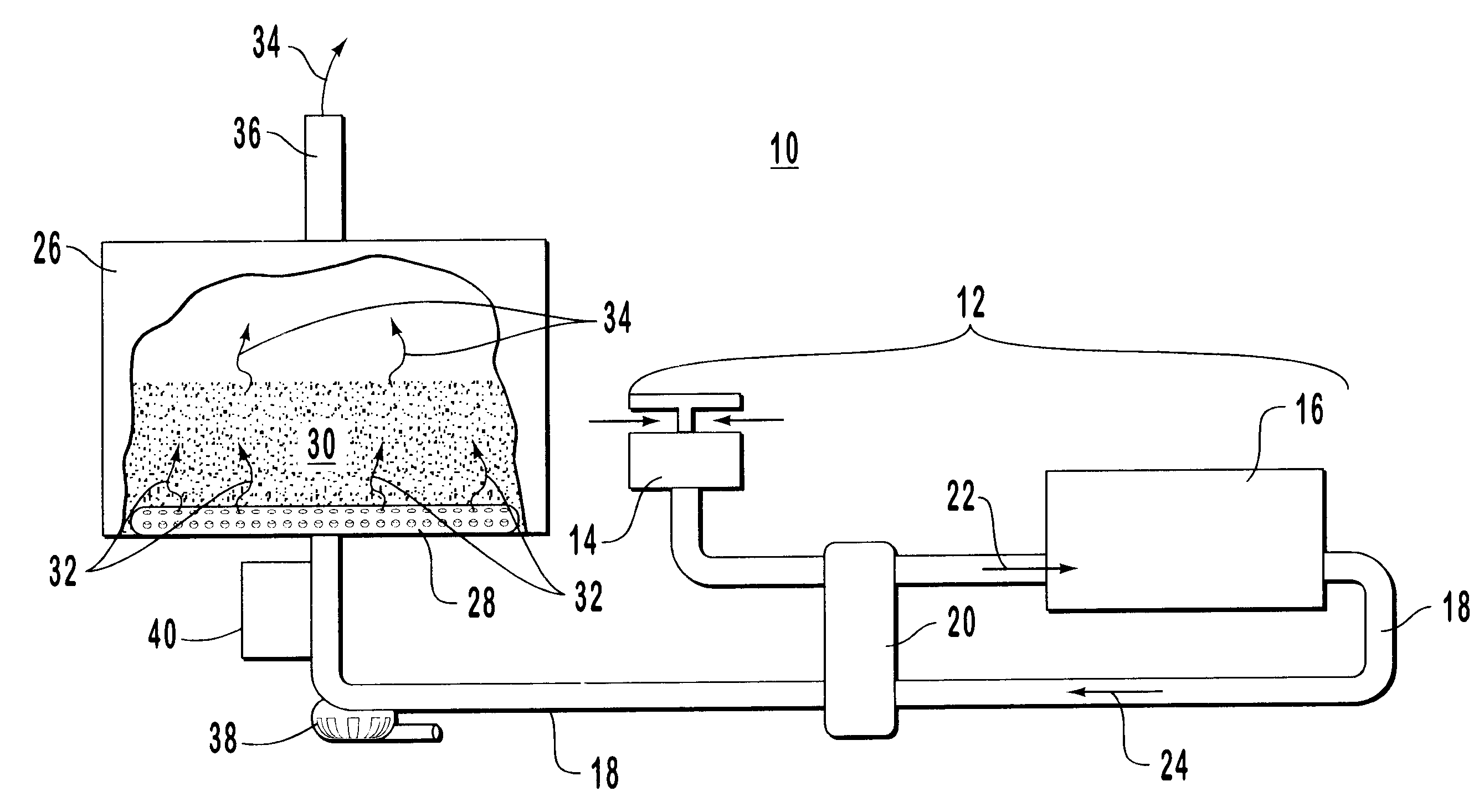Methods and apparatus for low back pressure muffling of internal combustion engines
a low back pressure muffling and internal combustion engine technology, applied in the direction of mechanical equipment, engines, machines/engines, etc., can solve the problems of significant "back pressure", reduce fuel economy and power, and drawback of considerable noise, so as to improve engine power and fuel efficiency, reduce back pressure, and reduce back pressure
- Summary
- Abstract
- Description
- Claims
- Application Information
AI Technical Summary
Benefits of technology
Problems solved by technology
Method used
Image
Examples
example 2
Further experiments were carried out using the apparatus described in Example 1, in which the temperature of the exhaust gases coming out the turbo was measured at 833.degree. F. at a back pressure of 29 inches of water, at full load. This back pressure was caused mostly by the resistance of the diffusion pipe. After passing through the muffling / reaction chamber, the temperature of the waste gases dropped to about 125.degree. F. The waste gases included virtually no measurable soot, hydrocarbons, or CO. The considerable drop in temperature was postulated to be due to the catalytic reactions occurring with the reaction chamber. The sound was greatly muffled and did not exceed 100 db. The inside of the diffusion pipe showed considerable buildup of soot and oily hydrocarbons but was totally clean in the region of the holes adjacent the silica particles.
example 3
Further experiments were carried out using the apparatus described in Example 1, except that the silica sand was not fluidized as much but was kept in only a slightly elevated state. Furthermore, after the diesel engine was warmed up all auxiliary heat was cut off such that the only heat input into the reaction chamber was provided by the diesel engine exhaust. A series of measurements indicated that the temperature leveled off and remained at about 180.degree. C. The treated exhaust gases were sampled and found to be virtually emission free. In particular, the filter paper used to sample particulates from the treated gases remained virtually clean over time (i.e. after sampling for more than 10 minutes), which indicated that over 99% of the particulates were being oxidized without any-additional heat inputs.
Thereafter, large filter paper was placed over the opening of the exhaust stack itself for at least 10 minutes to ensure that the sampling techniques used above were not flawed ...
example 4
A reaction chamber containing silica is used to remove up to 98% of the soot and other unburnt carbonaceous materials emitted in the flue gas from an industrial burner that utilizes coal or fuel oil. Carbon monoxide and nitrogen oxides are also greatly reduced. Because the industrial plant is stationary, and because silica is extremely inexpensive, an amount of silica appropriate for oxidizing the unburnt components from the industrial burners is used. The temperature is maintained within a range from about 100.degree. C. to about 500.degree. C. by appropriate means, and the moisture content of the gases within the reaction chamber is maintained by appropriate means, such as by, e.g., a humidifier.
PUM
 Login to View More
Login to View More Abstract
Description
Claims
Application Information
 Login to View More
Login to View More - R&D
- Intellectual Property
- Life Sciences
- Materials
- Tech Scout
- Unparalleled Data Quality
- Higher Quality Content
- 60% Fewer Hallucinations
Browse by: Latest US Patents, China's latest patents, Technical Efficacy Thesaurus, Application Domain, Technology Topic, Popular Technical Reports.
© 2025 PatSnap. All rights reserved.Legal|Privacy policy|Modern Slavery Act Transparency Statement|Sitemap|About US| Contact US: help@patsnap.com



